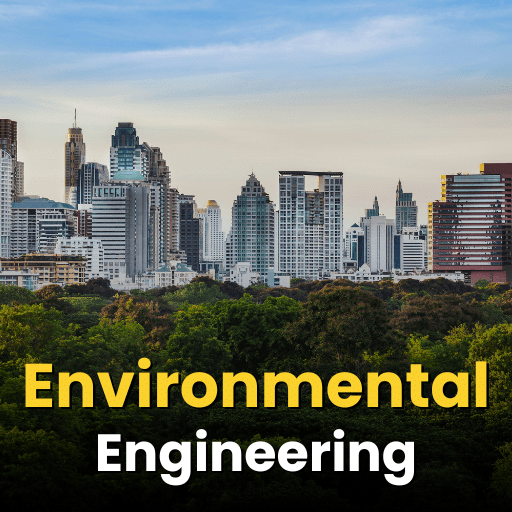System: Conservation Equations & Analysis of Finite Control Volume | Fluid Mechanics for Mechanical Engineering PDF Download
System
Definition
- System: A quantity of matter in space which is analyzed during a problem.
- Surroundings: Everything external to the system.
- System Boundary: A separation present between system and surrounding.
Classification of the system boundary:-
- Real solid boundary
- Imaginary boundary
The system boundary may be further classified as:-
- Fixed boundary or Control Mass System
- Moving boundary or Control Volume System
The choice of boundary depends on the problem being analyzed.
Fig 9.1 System and Surroundings
Classification of Systems
Types of System
Control Mass System (Closed System)
- Its a system of fixed mass with fixed identity.
- This type of system is usually referred to as "closed system".
- There is no mass transfer across the system boundary
- Energy transfer may take place into or out of the system.
Fig 9.2 A Control Mass System or Closed System
Control Volume System (Open System)
Its a system of fixed volume.
This type of system is usually referred to as "open system” or a "control volume"
Mass transfer can take place across a control volume.
Energy transfer may also occur into or out of the system.
A control volume can be seen as a fixed region across which mass and energy transfers are studied.
Control Surface- Its the boundary of a control volume across which the transfer of both mass and energy takes place.
The mass of a control volume (open system) may or may not be fixed.
When the net influx of mass across the control surface equals zero then the mass of the system is fixed and vice-versa.
The identity of mass in a control volume always changes unlike the case for a control mass system (closed system).
Most of the engineering devices, in general, represent an open system or control volume.
Example:-Heat exchanger - Fluid enters and leaves the system continuously with the transfer of heat across the system boundary.
- Pump - A continuous flow of fluid takes place through the system with a transfer of mechanical energy from the surroundings to the system.
Fig 9.3 A Control Volume System or Open System
Isolated System
Its a system of fixed mass with same identity and fixed energy.
No interaction of mass or energy takes place between the system and the surroundings.
- In more informal words an isolated system is like a closed shop amidst a busy market.
Fig 9.4 An Isolated System
Conservation of Mass - The Continuity Equation
Law of conservation of mass
The law states that mass can neither be created nor be destroyed. Conservation of mass is inherent to a control mass system (closed system)
The mathematical expression for the above law is stated as:
∆m/∆t = 0, where m = mass of the systemFor a control volume (Fig.9.5), the principle of conservation of mass is stated as
Rate at which mass enters = Rate at which mass leaves the region + Rate of accumulation of mass in the region
OR
Rate of accumulation of mass in the control volume
+ Net rate of mass efflux from the control volume = 0 (9.1)
Continuity equation
The above statement expressed analytically in terms of velocity and density field of a flow is known as theequation of continuity.
Fig 9.5 A Control Volume in a Flow Field
Continuity Equation - Differential Form
Derivation
The point at which the continuity equation has to be derived, is enclosed by an elementary control volume.
- The influx, efflux and the rate of accumulation of mass is calculated across each surface within the control volume.
Fig 9.6 A Control Volume Appropriate to a Rectangular Cartesian Coordinate System
Consider a rectangular parallelopiped in the above figure as the control volume in a rectangular cartesian frame of coordinate axes.
- Net efflux of mass along x -axis must be the excess outflow over inflow across faces normal to x -axis.
- Let the fluid enter across one of such faces ABCD with a velocity u and a density ρ.The velocity and density with which the fluid will leave the face EFGH will be
respectively (neglecting the higher order terms in δx).
- Therefore, the rate of mass entering the control volume through face ABCD = ρu dy dz.
- The rate of mass leaving the control volume through face EFGH will be
(neglecting the higher order terms in dx)
- Similarly influx and efflux take place in all y and z directions also.
Rate of accumulation for a point in a flow field
Using, Rate of influx = Rate of Accumulation + Rate of Efflux
- Transferring everything to right side
(9.2)
This is the Equation of Continuity for a compressible fluid in a rectangular cartesian coordinate system.
Continuity Equation - Vector Form
- The continuity equation can be written in a vector form as
where is the velocity of the point
- In case of a steady flow,
- Hence Eq. (9.3) becomes
(9.4)
- In a rectangular cartesian coordinate system
(9.5)
Equation (9.4) or (9.5) represents the continuity equation for a steady flow.
In case of an incompressible flow,
ρ = constantHence,
Moreover
Therefore, the continuity equation for an incompressible flow becomes(9.6)
(9.7)
- In cylindrical polar coordinates eq.9.7 reduces to
- Eq. (9.7) can be written in terms of the strain rate components as
(9.8)
Continuity Equation - A Closed System Approach
We know that the conservation of mass is inherent to the definition of a closed system as Dm/Dt = 0 (where m is the mass of the closed system).
However, the general form of continuity can be derived from the basic equation of mass conservation of a system.
Derivation :-
Let us consider an elemental closed system of volume V and density ρ.
Now (dilation per unit volume)
In vector notation we can write this as
The above equations are same as that formulated from Control Volume approach.
|
56 videos|106 docs|75 tests
|
FAQs on System: Conservation Equations & Analysis of Finite Control Volume - Fluid Mechanics for Mechanical Engineering
| 1. What are conservation equations in civil engineering? |  |
| 2. How are conservation equations applied in the analysis of finite control volume in civil engineering? |  |
| 3. What is the significance of finite control volume in civil engineering analysis? |  |
| 4. Can you provide an example of how conservation equations are used in civil engineering analysis? |  |
| 5. What are some common applications of conservation equations in civil engineering? |  |


























